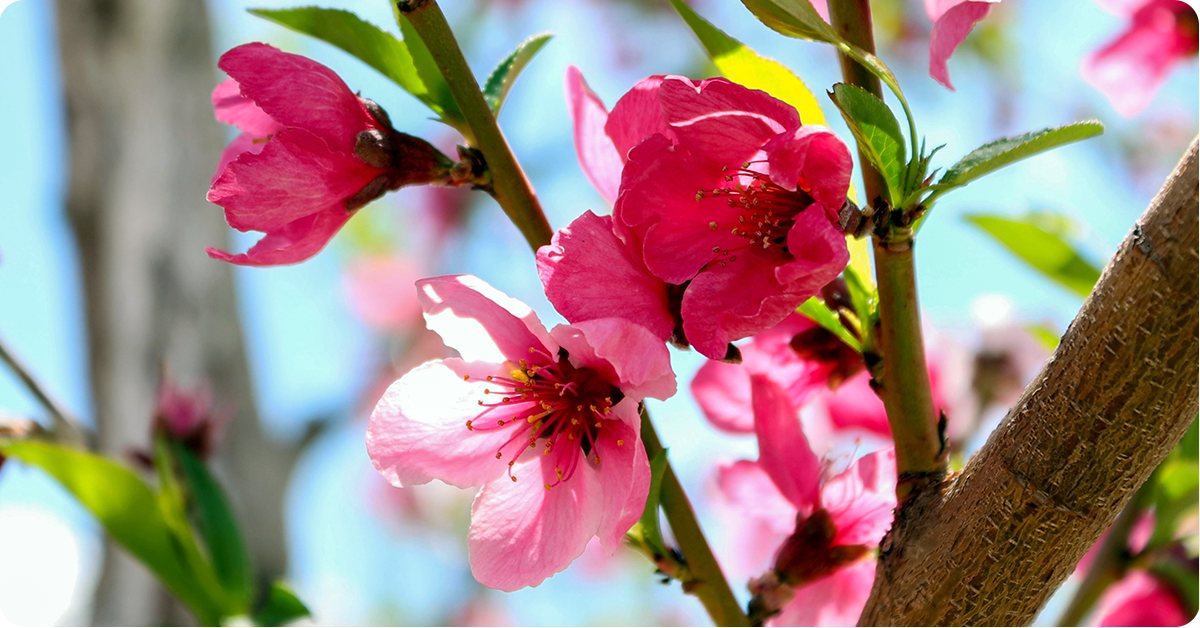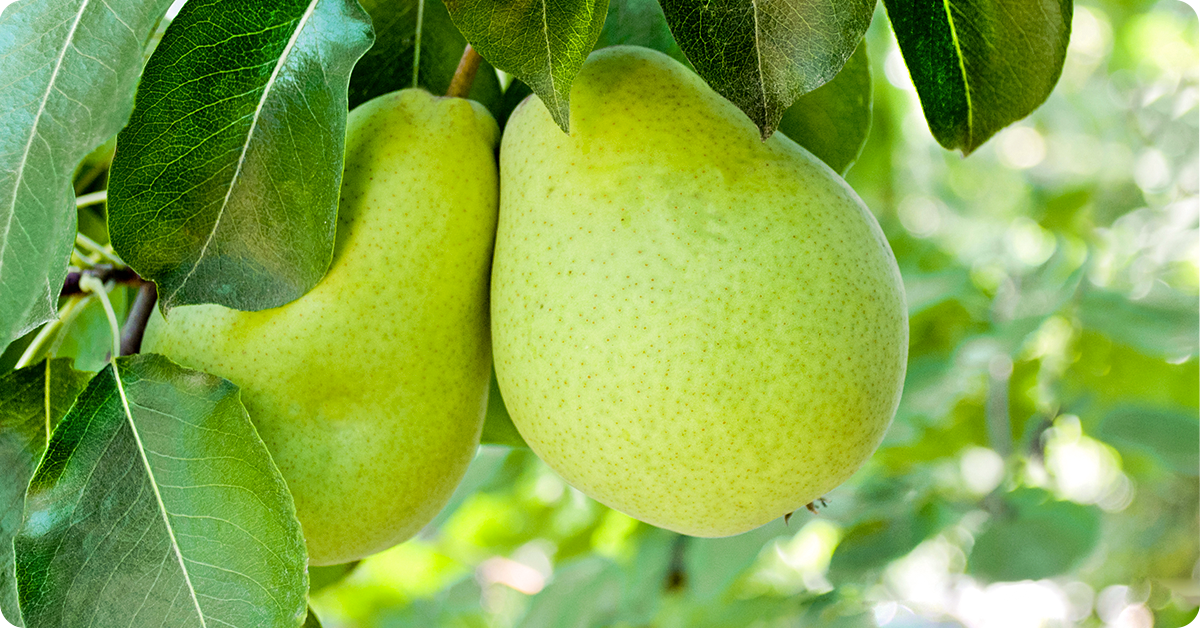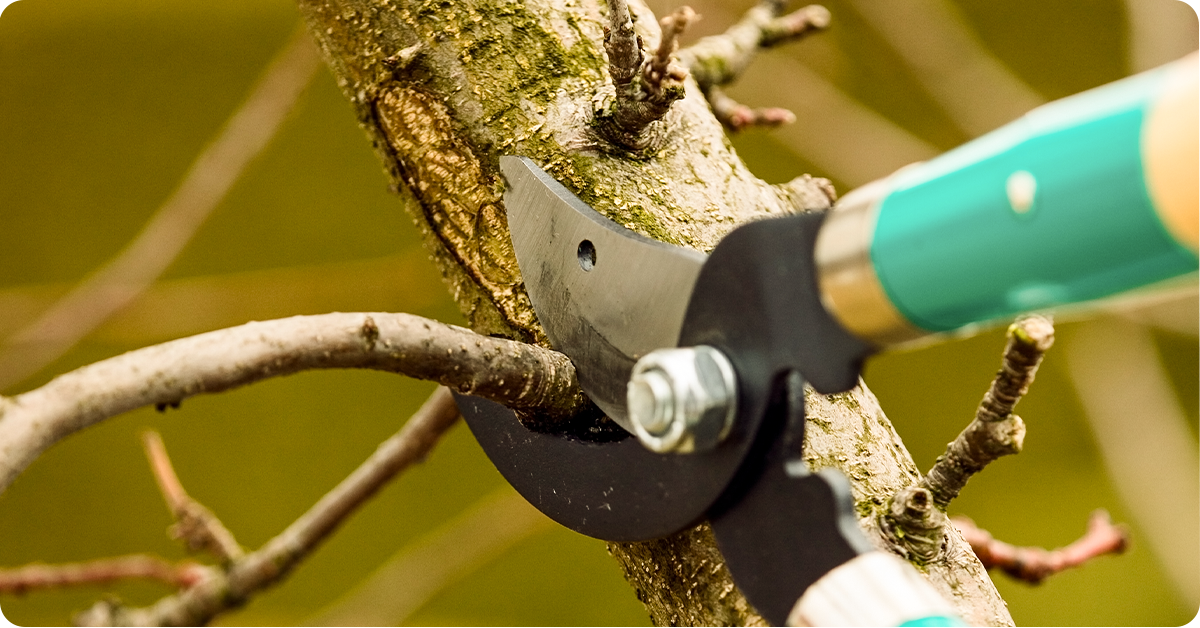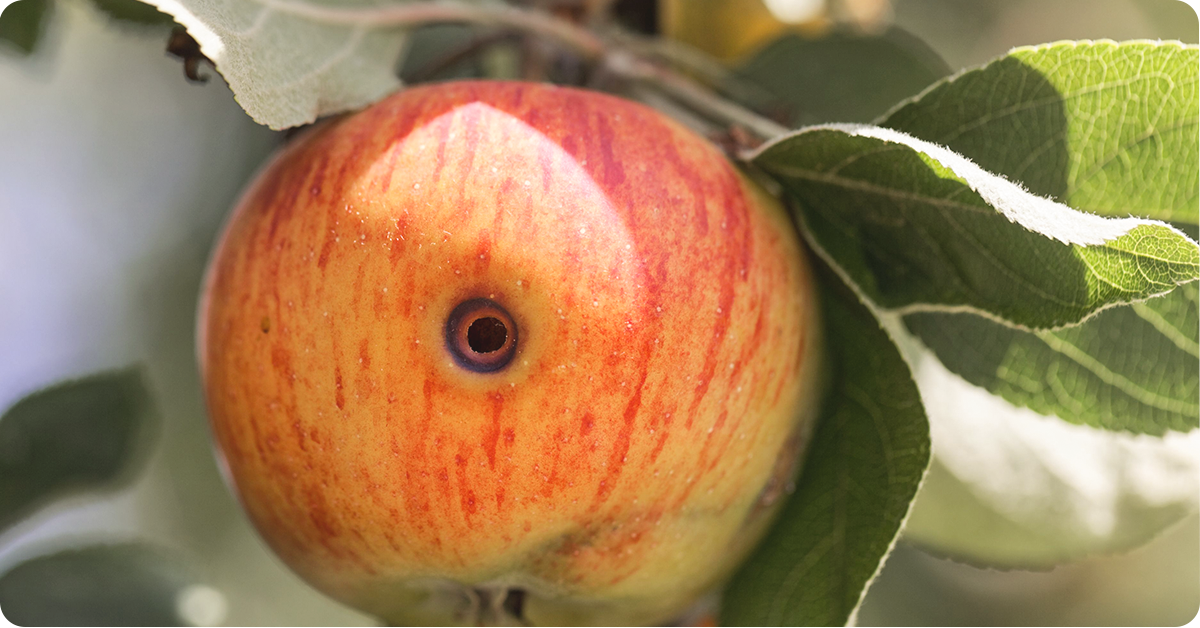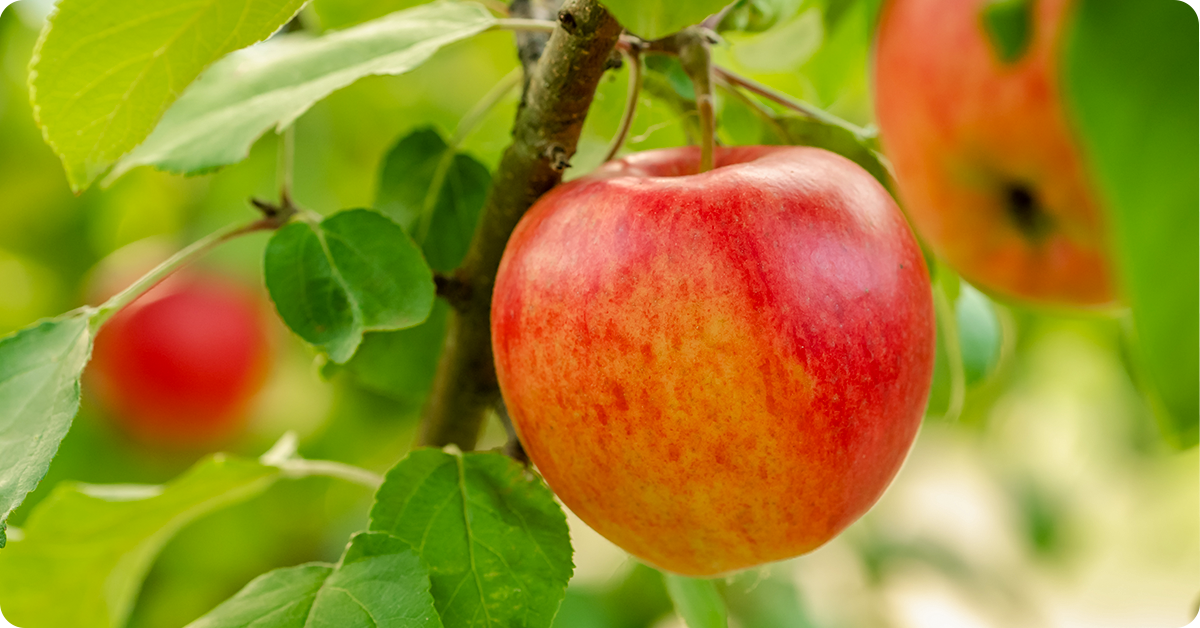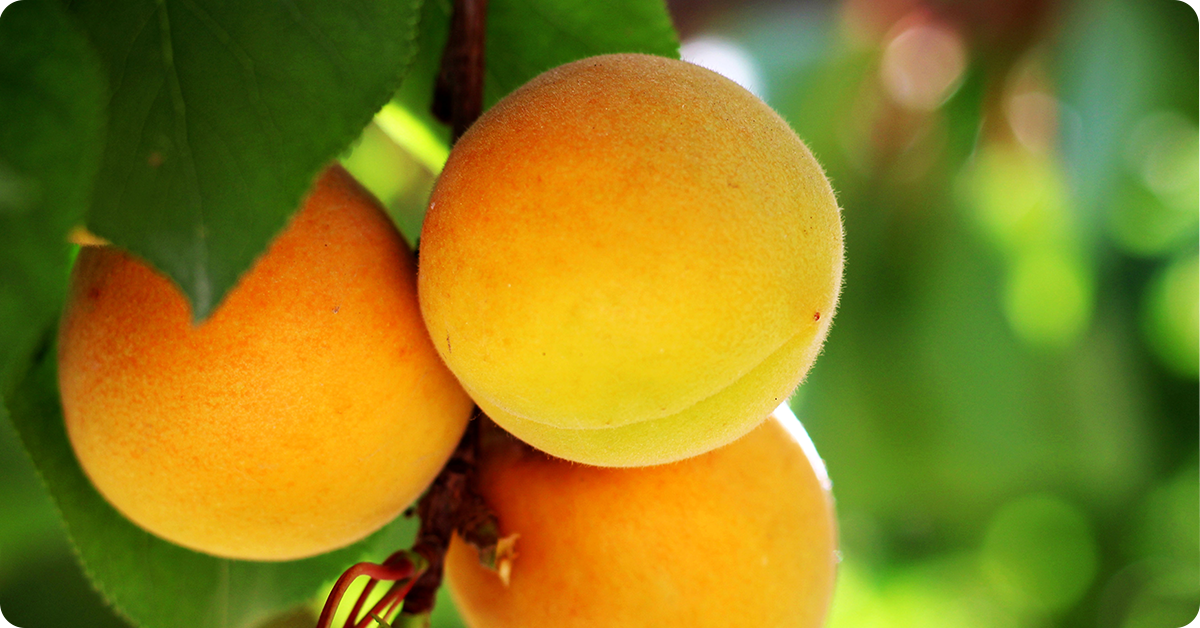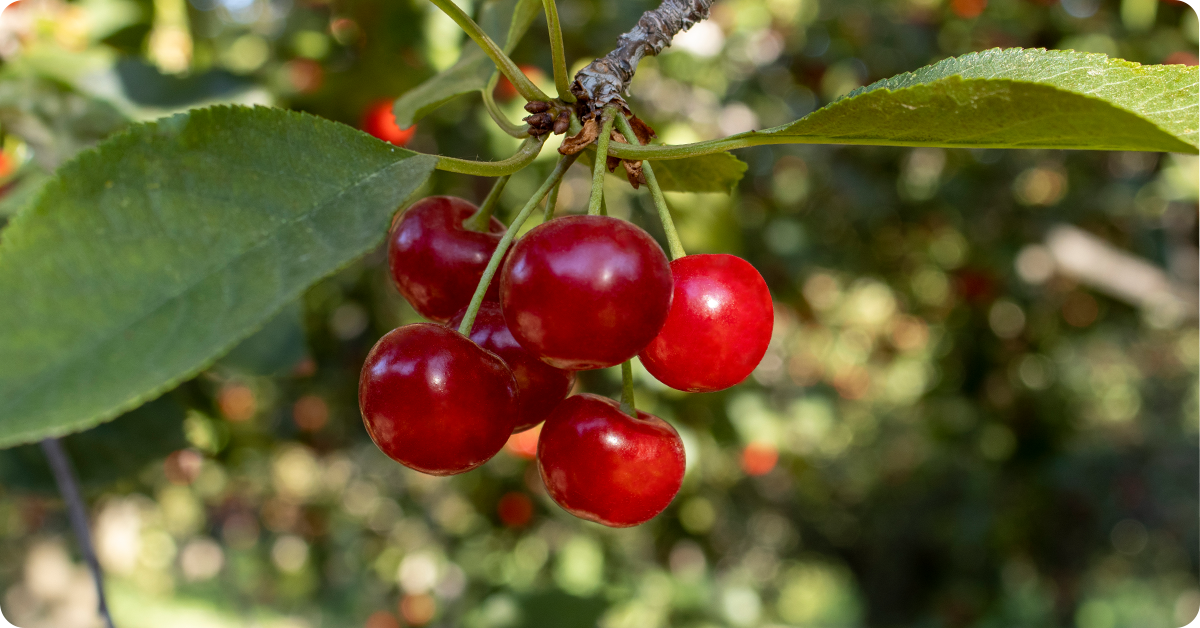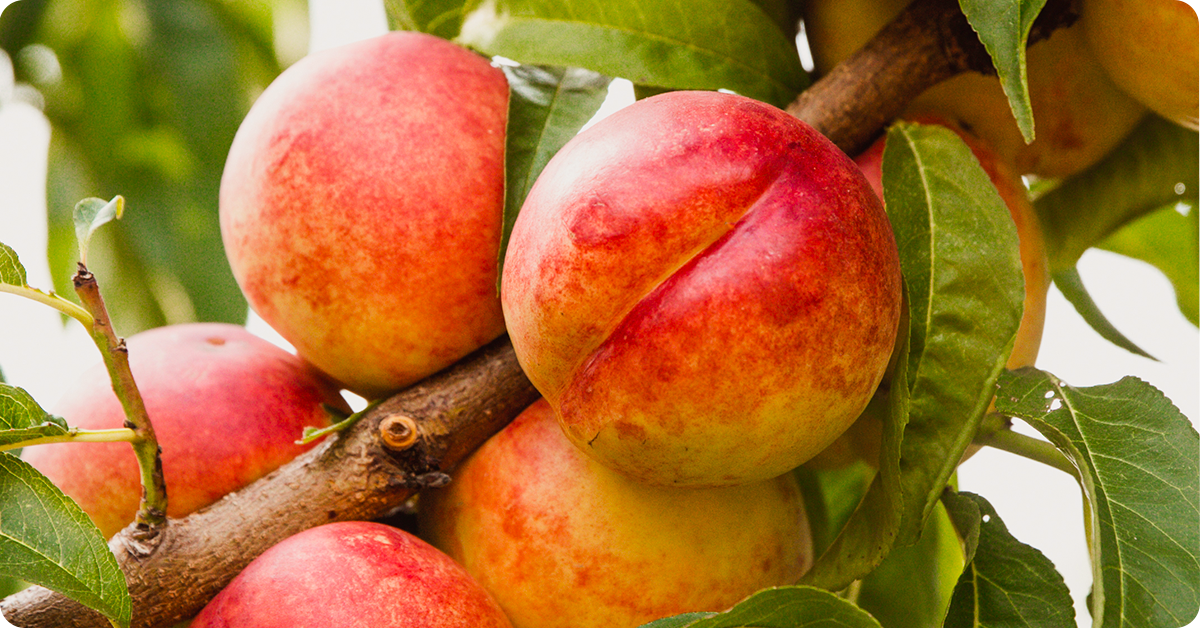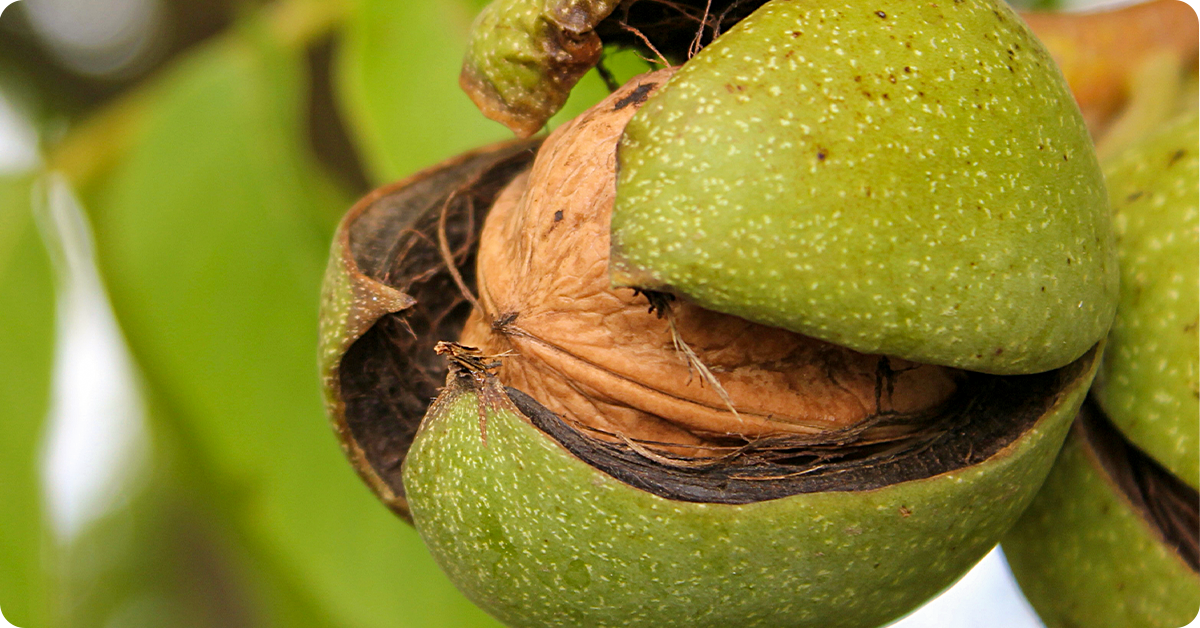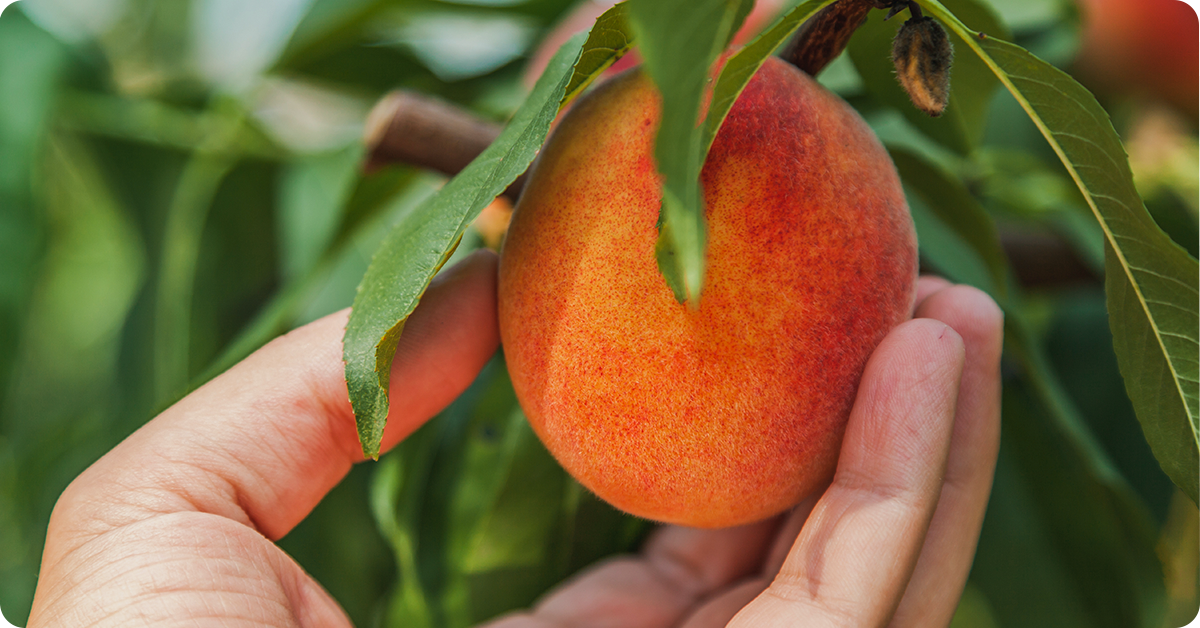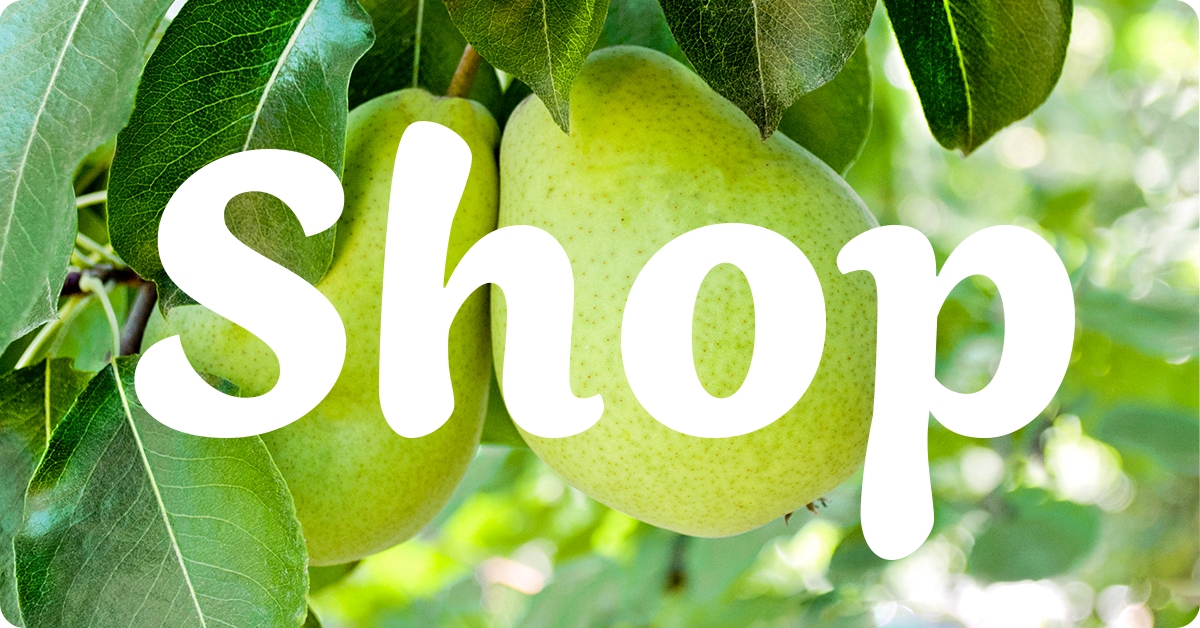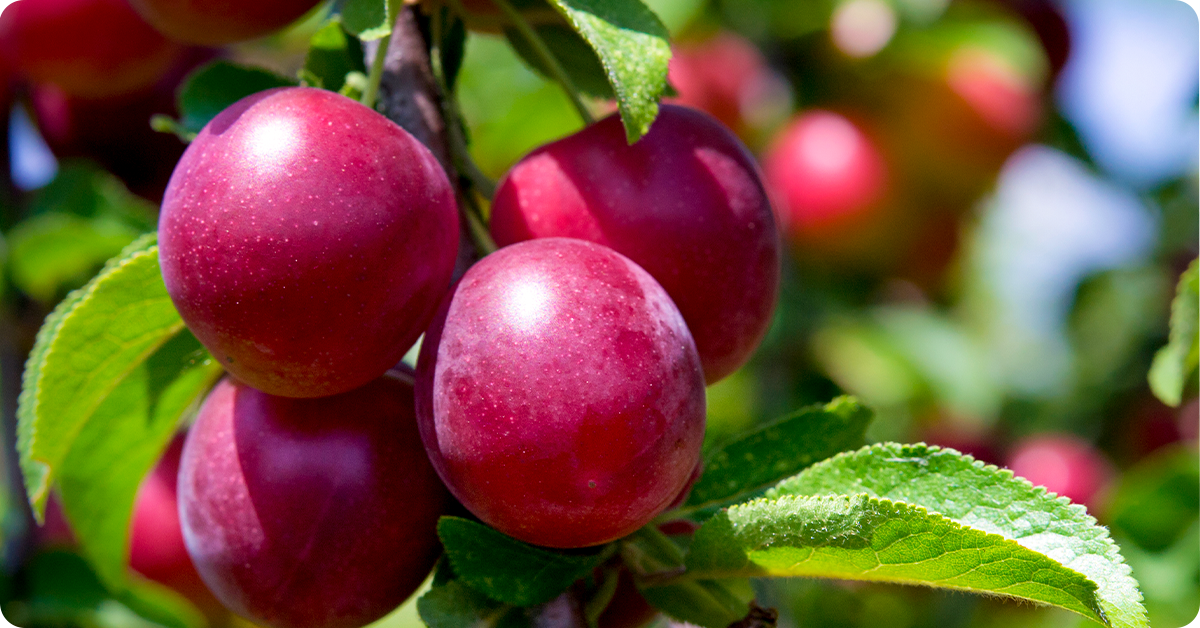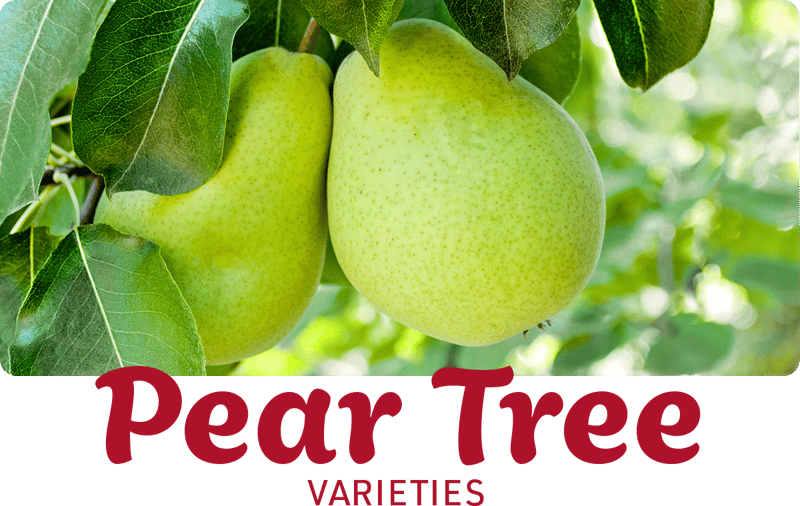
Discover the perfect pear tree varieties for your backyard oasis. Indulge in the crisp, refreshing goodness of fresh pears right from the tree. IFA Pear tree varieties are selected to thrive in our intermountain climates and bring joy to backyard growers and fruit producers alike.
Enjoy the best of three Asian pear varieties on one tree with this 3-in-1 pear combo. Combination trees are grafted with the branches of several pear varieties. Each grafted branch bears fruit of their tree of origin. Each branch produces fruit with its own unique flavor. Enjoy a combination of crisp varieties.
-
SHINSEIKI: Large to medium round fruit with a golden yellow color. Creamy white crisp flesh has mild flavor, tastes best when tree ripened. Keeps well on the tree for 4 to 6 weeks. Will provide multiple harvests. Good for eating fresh, cooking and canning.
-
CHOJURO: Large round green to yellow fruit. White flesh that is crisp and juicy. Ripens in late August. Keeps 6 to 8 months. Good for fresh eating, cooking and canning.
- NIJISSEIKI (AKA 20TH CENTURY): Large round yellow fruit with mild russeting. White with clean, crisp, juicy apple like flavor. Keeps for months, ripens on the tree in late August to September. Good for eating fresh, salads and canning. Self-fruitful, good pollinizer for other Asian Pears.
This tree is grown in the Espalier style. Excellent for planting along sunny walls and fences. Fruit ripened on the tree keeps well for several weeks. Moderately susceptible to Fire Blight. To avoid this, spray with a Fire Blight control when flowering. All of these varieties will pollinate each other. Asian pears do not need cold storage to ripen. They will ripen on the tree and keep for many weeks.
Characteristics:
Tree Height*: 10 feet
Tree Width*: 10 feet
Rootstock: Semi-dwarf
USDA Zone: 5
Fruit Taste: Mild, crisp & juicy flavors–Each branch produces its own unique flavor
Harvest: Starts ripening in August
Fruit Storage: Up to 8 months
Pollinators: Self-fertile–combo varieties pollinate each other
*Tree height and width is based on proper pruning. See growing tips>>
Enjoy the best of four popular pear varieties on one tree with this 4-in-1 pear combo. Each branch produces fruit with its own unique flavor. Combination trees are grafted with the branches of several pear varieties. Each grafted branch bears fruit of their tree of origin. Enjoy a combination of sweet varieties.
- RESCUE: Large yellow pear with a red blush. Rescue pears have an excellent flavor and are great for eating fresh, baking, canning and freeze-drying. They ripen in early- to mid-September
- BARTLETT: Large and golden-yellow with a red blush. Bartlett pears are mild and sweet, great for eating fresh and canning. Harvest in mid-August to mid September.
- FLEMISH BEAUTY: Medium to large sized fruit with yellow skin & a red blush. The flavor is a nice balance between sweet & sour. Excellent for fresh eating as well as drying & freeze-drying. Susceptible to Fire Blight. Self-fruitful.
- RED BARTLETT: Medium to large fruit with a crimson-red skin. Red Bartlett's have a sweet flavor and are great for eating fresh, canning and baking. They add an especially beautiful color to desserts. Red Bartlett pears ripe in late August.
Grows best in full sun and well-drained soil. Pears do not ripen on the tree, they need a period of cold storage in a cool dark location to fully ripen, one can tell if a pear is ready to pick by tilting it horizontally, a mature pear will easily break off the branch at this angle. Self-fertile–combo varieties pollinate each other.
Characteristics:
Tree Height*: 10 feet
Tree Width*: 10 feet
Rootstock: Semi-dwarf
USDA Zone: 4
Fruit Taste: Combinations of juicy, sweet & sour flavors depending on variety–Each branch produces fruit with its own flavor
Harvest: Starts ripening in August
Pollinators: Self-fertile–combo varieties pollinate each other
*Tree height and width is based on proper pruning. See growing tips>>
Enjoy the best of five popular pear varieties on one tree with this 5-in-1 pear combo. Each branch produces fruit with its own unique flavor. Combination trees are grafted with the branches of several pear varieties. Each grafted branch bears fruit of their tree of origin. Enjoy a combination of sweet varieties.
- URE: Medium to small pear with greenish yellow skin. White flesh is sweet & juicy. Usually harvested in August to September. Excellent for fresh eating and canning. Very resistant to Fire Blight! Pollinizer is ‘Gold Spice’.
- GOLD SPICE: Small pear with yellow skin blushed red. White flesh has a sweet/spicy taste and crisp texture. Excellent for fresh eating, baking and canning. Resistant to Fire Blight. Pollinizer is ‘Ure’.
- FLEMISH BEAUTY: Medium to large sized fruit with yellow skin & a red blush. The flavor is a nice balance between sweet & sour. Excellent for fresh eating as well as drying & freeze-drying. Susceptible to Fire Blight. Self-fruitful.
- COMICE: Large yellow pear with white flesh that is sweet and juicy. Good for fresh eating, salads and sauces. Fire Blight resistant. Pollinated by ‘Summercrisp”.
- SUMMERCRISP: Medium sized fruit. Yellow green skin with bright red blush. Harvest in September. White flesh has a sweet mild slightly tart flavor. Recommended for fresh eating only. Moderate Fire Blight resistance. Pollinizer ‘Comice’
Grows best in full sun and well-drained soil. Spray with Fire Blight control when flowering to avoid Fire Blight infection. To avoid Fire Blight infection, spray with a Fire Blight control when flowering. Pears do not ripen on the tree, they need a period of cold storage in a cool dark location to fully ripen, one can tell if a pear is ready to pick by tilting it horizontally, a mature pear will easily break off the branch at this angle. Self-fertile–combo varieties pollinate each other.
Characteristics:
Tree Height*: 10 feet
Tree Width*: 10 feet
Rootstock: Semi-dwarf
USDA Zone: 4
Fruit Taste: Combinations of juicy, sweet, sour, spicy & slightly tart flavors depending on variety–Each branch produces fruit with its own flavor
Harvest: Starts ripening in September
Pollinators: Self-fertile–combo varieties pollinate each other
*Tree height and width is based on proper pruning. See growing tips>>
Enjoy the best of five popular pear varieties on one tree with this 5-in-1 pear combo. Each branch produces fruit with its own unique flavor. Combination trees are grafted with the branches of several pear varieties. Each grafted branch bears fruit of their tree of origin. Enjoy a combination of sweet varieties.
- RESCUE: Large yellow pear with a red blush. Rescue pears have an excellent flavor and are great for eating fresh, baking, canning and freeze-drying. They ripen in early- to mid-September
- BARTLETT: Large and golden-yellow with a red blush. Bartlett pears are mild and sweet, great for eating fresh and canning. Harvest in mid-August to mid September.
- FLEMISH BEAUTY: Medium to large sized fruit with yellow skin & a red blush. The flavor is a nice balance between sweet & sour. Excellent for fresh eating as well as drying & freeze-drying. Susceptible to Fire Blight. Self-fruitful.
- RED BARTLETT: Medium to large fruit with a crimson-red skin. Red Bartlett's have a sweet flavor and are great for eating fresh, canning and baking. They add an especially beautiful color to desserts. Red Bartlett pears ripe in late August.
- BOSC: Large, brown-ish fruit with a round bottom, slender top and white flesh. Bosc pears are sweet with a firm, crunchy flesh. Great for eating fresh and excellent for cooking. Enjoy them in salads and dessert. Bosc pears ripen in late September.
Grows best in full sun and well-drained soil. Pears do not ripen on the tree, they need a period of cold storage in a cool dark location to fully ripen, one can tell if a pear is ready to pick by tilting it horizontally, a mature pear will easily break off the branch at this angle. Self-fertile–combo varieties pollinate each other.
Characteristics:
Tree Height*: 10 feet
Tree Width*: 10 feet
Rootstock: Semi-dwarf
USDA Zone: 4
Fruit Taste: Combinations of juicy, sweet & slightly tart flavors depending on variety–Each branch produces fruit with its own unique flavor
Harvest: Starts ripening in September
Pollinators: Self-fertile–combo varieties pollinate each other
*Tree height and width is based on proper pruning. See growing tips>>
Discover the Beauty and Bounty of Bartlet Pear Trees. Bartlett pears are large and golden-yellow with a red blush. The pears are mild and sweet, great for eating fresh and canning. Harvest in mid-August to mid-September–fruit must finish ripening in a cool, dark location.
Explore the exquisite flavor and abundant harvest of Bartlett pear trees, the perfect addition to any orchard or backyard garden. Plant with D’Anjou pear trees for cross-pollination and fruit-set.
Characteristics:
Tree Height*: 10 feet
Tree Width*: 10 feet
Rootstock: Semi-dwarf
USDA Zone: 4
Fruit Taste: Sweet & juicy
Harvest: Begins ripening in mid-August to mid-September–Must finish ripening in a cool, dark location
Fruit Storage:
Pollinators: D'Anjou
*Tree height and width is based on proper pruning. See growing tips>>
Chojuro Asian pears are a popular variety with a uniquely sweet, butterscotch flavor. It produces a large round green to yellow fruit with white flesh that is crisp and juicy. Ripens in late August into September and keeps up to 6 to 8 months. Good for fresh eating, cooking and canning.
Plant with Bartlett, Shinko, Shinseiki, Chojuro or Nijisseiki pear trees for cross-pollination and fruit-set.
Characteristics:
Tree Height*: 10 feet
Tree Width*: 10 feet
Rootstock: Semi-dwarf
USDA Zone: 5
Fruit Taste: Sweet & juicy with butterscotch highlights
Harvest: Ripens in August into September
Fruit Storage: Keeps up to 6 to 8 months
Pollinators: Bartlett, Shinko, Shinseiki, Chojuro, Nijisseiki
*Tree height and width is based on proper pruning. See growing tips>>
Delight your taste buds with fresh D'Anjou pears. These medium to large fruits are green with a sweet and refeshing lemon-lime flavor. Harvest in August–fruit must finish ripening in a cool, dark location. D'Anjou pears store well up to two months.
Enhance your backyard with these luscious and versatile fruit trees. Plant with Bartlett pear trees for cross-pollination and fruit-set.
Characteristics:
Tree Height*: 10 feet
Tree Width*: 10 feet
Rootstock: Semi-dwarf
USDA Zone: 4
Fruit Taste: Sweet & refreshing lemon-lime flavor
Harvest: Begins ripening in August–must finish ripening in a cool, dark location
Fruit Storage: Up to 2 months
Pollinators: Bartlett
*Tree height and width is based on proper pruning. See growing tips>>
Uncover the enchanting allure of cultivating Shinko Asian pear trees in your backyard. Shinko Asian pears are large, and golden-brown fruit with a pale-yellow center. The fruit is sweet and juicy, great for eating fresh, cooking or canning. Ripens on the tree in late September. Fruit stores well for two to three months in a cool, dry and dark location–wrap each pear in paper towels to absorb excess moisture.
Enjoy the bountiful benefits for growing your own Shinko Asian Pear Trees. Plant with Bartlett, Chojuro, Nijisseiki or Shinseiki pear trees for cross-pollination and fruit-set.
Characteristics:
Tree Height*: 10 feet
Tree Width*: 10 feet
Rootstock: Semi-dwarf
USDA Zone: 5
Fruit Taste: Sweet & juicy flavor
Harvest: Ripens in late September
Fruit Storage: Up to 3 months
Pollinators: Bartlett, Chojuro, Nijisseiki, Shinseiki
*Tree height and width is based on proper pruning. See growing tips>>
Highly desired for their sweet, crisp flavor, Shinseiki Asian pears are medium to large round fruit with a golden yellow color. Their creamy white crisp flesh has mild flavor and tastes best when tree ripened. They keep well on the tree for 4 to 6 weeks and will provide multiple harvests in August and September. Shinseiki pears are great for eating fresh, salads, cooking and canning.
Fruit stores well for up to two months in a cool, dry and dark location–wrap each pear in paper towels to absorb excess moisture. Plant with Bartlett, Chojuro, Shinko or Nijisseiki pear trees for cross-pollination and fruit-set.
Characteristics:
Tree Height*: 10 feet
Tree Width*: 10 feet
Rootstock: Semi-dwarf
USDA Zone: 5
Fruit Taste: Sweet & juicy flavor
Harvest: Ripens in August into September
Fruit Storage: Up to 3 months
Pollinators: Bartlett, Chojuro, Shinko, Nijisseiki
*Tree height and width is based on proper pruning. See growing tips>>
Fruit Tree Pollination
Pear trees require pollination in order to produce a bountiful harvest. Pollination is the process by which pollen from flower is transferred to fertilize and develop fruit. It plays a significant role in determining the quantity and quality of your fruit harvest.
Cross-Pollinating Pear Trees
Pear trees are not self-pollinating, which means they require pollen from other pear fruit trees in order to set fruit. It is essential to have compatible pear tree varieties in close proximity to ensure cross-pollination occurs. The general rule of thumb is to plant two different cultivars within 100 feet of each other to maximize the chances of successful pollination.
Improve Pear Harvests with Overlapping Bloom Periods
When selecting pear tree varieties for your orchard or garden, consider their bloom periods. Pear trees have different bloom times, classified as early, mid or late season. Planting two varieties with overlapping bloom periods will increase the likelihood of successful pollination.
Get growing by reading about Backyard Fruit Tree 101, IFA's Growing Guide for Pears, fruit tree pruning tips and insect control for fruit trees. Discover more fruit growing tips by visiting IFA's Helping to Grow Blog.
Backyard Fruit Trees 101 for Growers
Grow your own apples, cherries, peaches and nectarines right in your backyard. Learn how to pick and care for backyard fruit trees. Continue >>>
IFA’s Growing Guide for Pears
See these tips for growing better, more productive Pome Fruits: Apples and Pears. Continue >>>
Pruning Different Types of Fruit Trees
Annual pruning improves the overall health and growth of your fruit tree. These simple tips help add years of great fruit production. Continue >>>
Control Common Fruit-Tree Pests
Effectively manage fruit-tree pests with the right tools and knowledge. Discover five common fruit-tree pests and how to control them. Continue >>>
Looking to grow the perfect fruit for you and your family? Discover IFA fruit and nut tree picks perfect for the intermountain west.
*Availability varies by season and location.




















